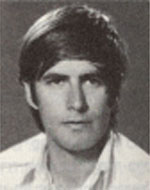Michael, son of Ahuva and Yosef, was born on April 2, 1946. In Rehovot, after his family moved to Tel Aviv, he studied at the Carmel elementary school and at the son of-Yehuda elementary school. He was a diligent, diligent student, he had a clear and thorough way of thinking, he liked to get to the bottom of things, and in every field he investigated deeply, refusing to take things for granted. With the willpower, knew how to set himself challenges and then to invest a great deal of effort in order to successfully meet them, so that, for example, in order to test his ability and physical fitness, he embarked on a journey to the sea. He was a member of the Scout movement and served as a counselor in the “Dizengoff” tribe, and together with his comrades he established a nucleus whose goal was to integrate into the Nahal Brigade. Michael was drafted into the IDF at the end of July 1964, and together with his comrades joined the Nahal Brigade. After completing basic training and training in a course in communications, he did agricultural training at Kibbutz Degania Aleph and later in the Nahal paramilitary brigade in Biranit. In late January 1967, Michael was discharged from regular service and assigned to a paratrooper unit of the parachuted Nahal Brigade. In this unit, he was called for periods of reserve duty, during which he fought in the Six-Day War. Since his youth saw his future as part of the labor settlement, he remained, after being discharged from regular service, as a member of Kibbutz Hatzerim, where he did most of his military service. He was ready to work hard and his day, which began early in the morning, would end in the late evening. He devoted himself mainly to the mechanical tools, which required skill and technical skills. Out of hesitation and uncertainty, he left the kibbutz after two years of friendship. After leaving the kibbutz, he studied for one year at the Faculty of Agriculture of the Hebrew University and, thanks to his outstanding achievements, received a scholarship that allowed him to study for three years at the Weizmann Institute of Science. Afterward he studied at the Faculty of Agricultural Engineering at the Technion and completed his studies successfully. During the course of his studies he became familiar with the importance of computer science. Thoroughly and methodically, he became familiar with the features of the computer and spent long hours programming. During his vacations, he worked as a security officer for El Al, a position that enabled him to tour many countries and get to know other landscapes and new people. He immortalized the images he had seen and left behind a large collection of slides depicting the landscapes he had seen. After completing his studies and being certified as a ground and water engineer, he began working as a water engineer in the Settlement Department of the Jewish Agency. He married his girlfriend Dalia and together he established a house in Givatayim and raised his son there. During the Yom Kippur War, his unit participated in the battles of containment and infiltration against the Egyptians in the Sinai. Michael was one of the first paratroopers to cross the Suez Canal in rubber boats and set up the bridgehead west of the Canal. On the 16th of Tishrei 5734 (October 16, 1973), Michael was killed and killed in a cemetery in Kiryat Shaul, leaving a wife, a son and a daughter, Michaela, In a letter of condolence to the bereaved family, his commander wrote: “Michael acted as part of a force whose mission was to open a path of progress for the armored forces in the West Bank. While clearing a village of enemy forces, he stormed the head of his soldiers, was hit in the head and killed on the spot. Michael was deadAnd served in the various tasks assigned to him, both as a soldier and as a commander. He was modest and quiet, loved all his friends and his fall left a deep void in his department. “
